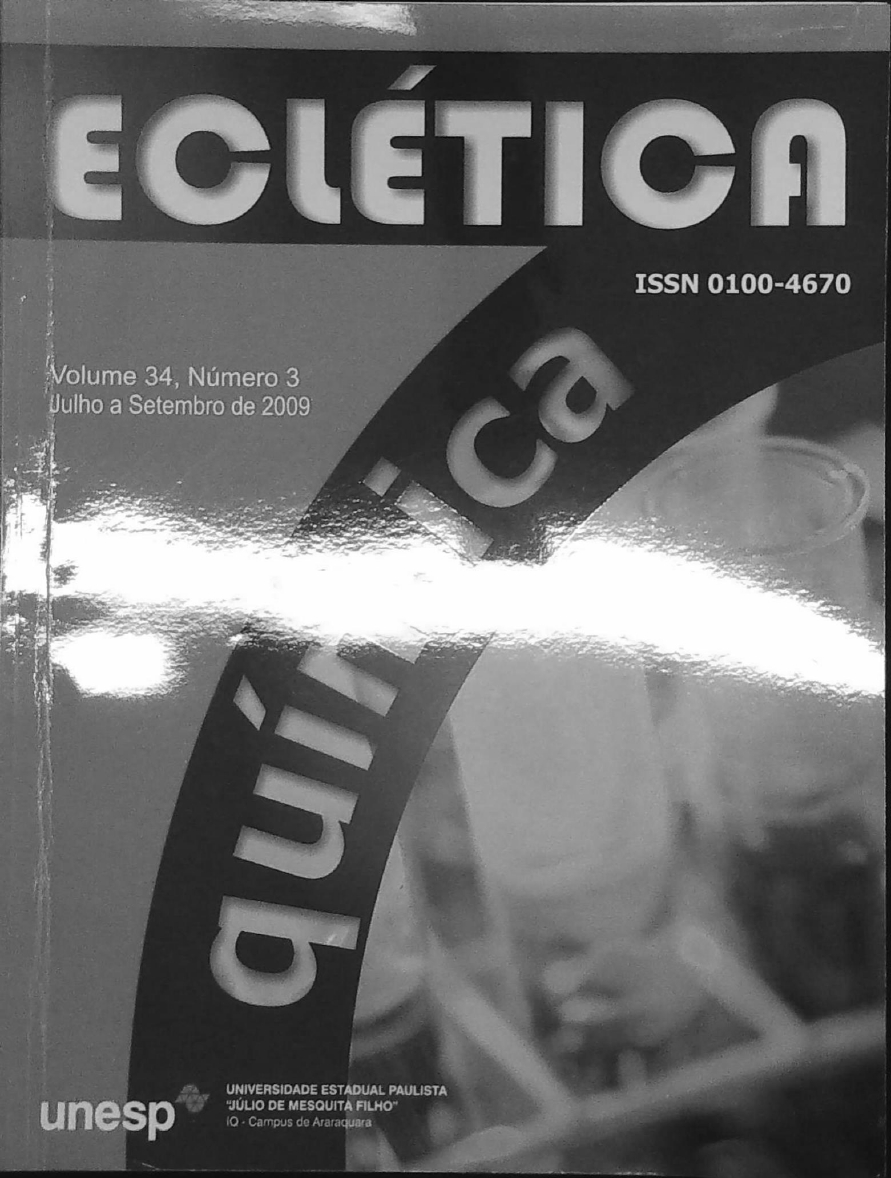Abstract
Capillary electrophoresis (CE) with capacitively coupled contactless conductivity detection (C4D) was used for determination of sodium and potassium concentrations in diet and non-diet soft drinks. Higher sodium concentrations were found in the diet samples due to the utilization of sodium salts of cyclamate and saccharine as sweeteners. The CE-C4D method can be used by food industries and health regulatory agencies for monitoring sodium and potassium content, not only in soft drink but in many others food products.References
G. A. MacGregor, Am. J. Kidney Dis. 37 (2001) S34.
F. J. He, G. A. MacGregor, Br. Med. J. 323 (2001) 497.
A. Toseto, Master’s Dissertation, Universidade Estadual de Ponta Grossa, Brazil, 2005.
M. F. M. Tavares, Quim. Nova 19 (1996) 173.
J. W. Jorgenson, K. D. Lukacs, Anal. Chem. 53 (1981) 1298.
J. A Fracassi da Silva, C. L. Lago, Anal. Chem. 70 (1998) 4339.
J. A. Fracassi da Silva, N. Guzman, C. L. Lago, J. Chromatogr. A 942 (2002) 249.
R. A. A. Munhõz, E. M. Richter, D. P. Jesus, C. L. Lago, L. Angnes, J. Braz. Chem. Soc. 15 (2004) 523.
E. M. Richter, R. A. A. Munhõz, D. P. Jesus, C. L. Lago, Angnes L., J. Braz. Chem. Soc. 16 (2005) 1134.
A. Z. Carvalho, J. A. Fracassi da Silva, C. L. Lago, Electrophoresis 24 (2003) 2138.
X. Y. Gong, P. C. Hauser, Electrophoresis 27 (2006) 468.
E. Samcova, P. Tuma, Electrophoresis 18 (2006) 152.

This work is licensed under a Creative Commons Attribution 4.0 International License.
Copyright (c) 2018 Eclética Química Journal





